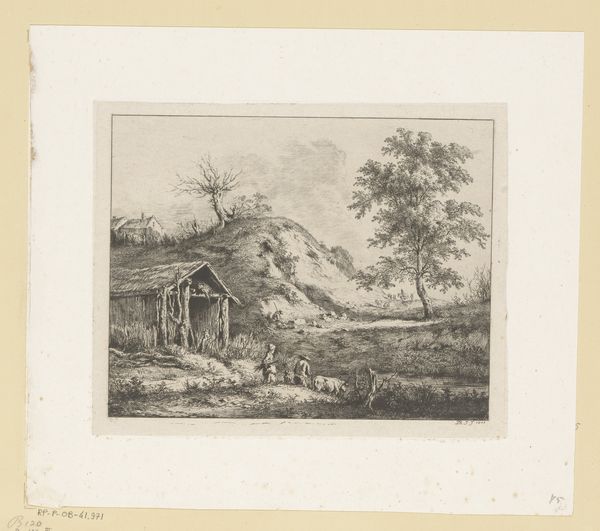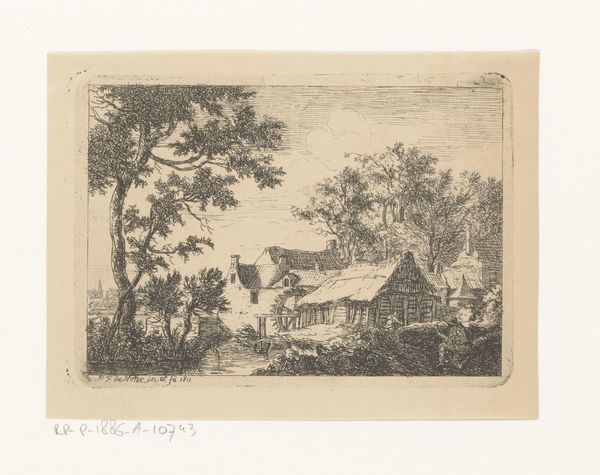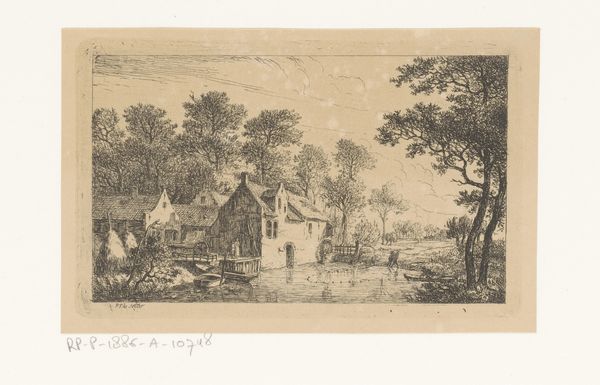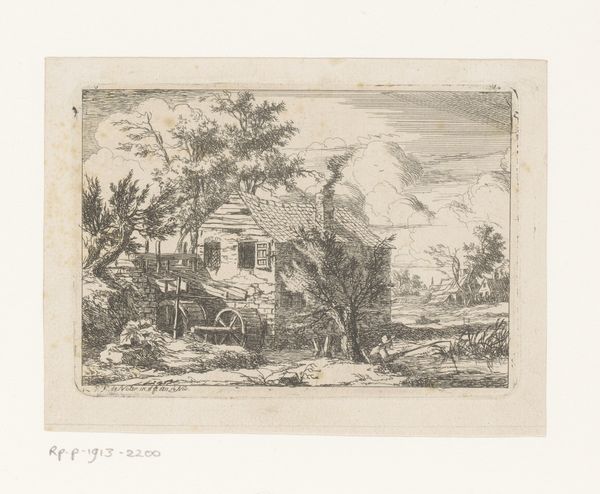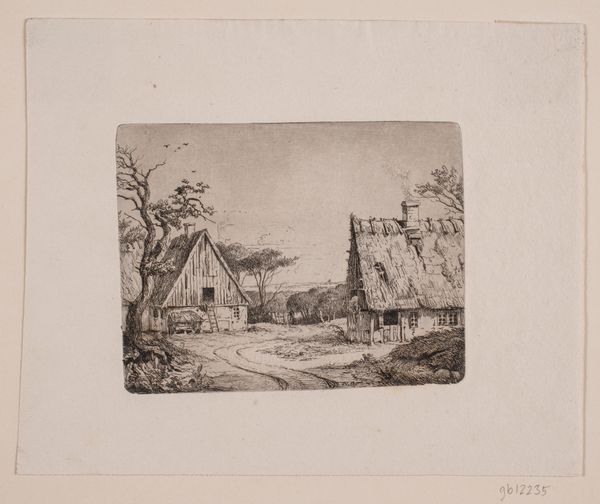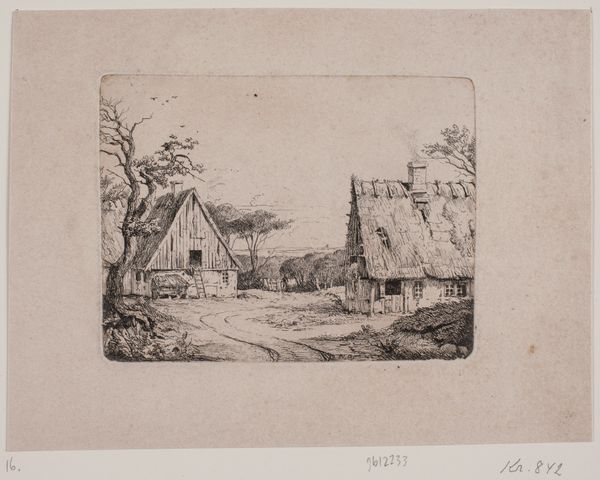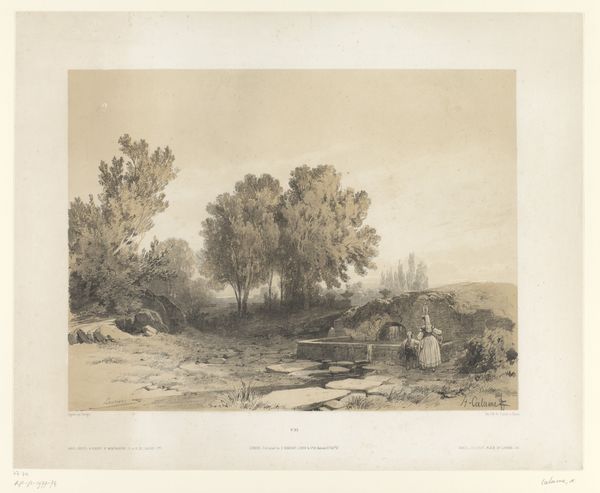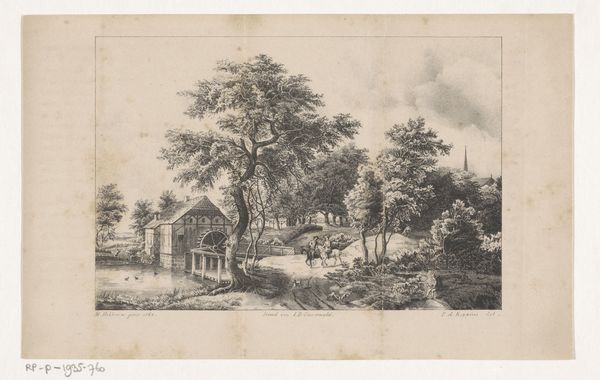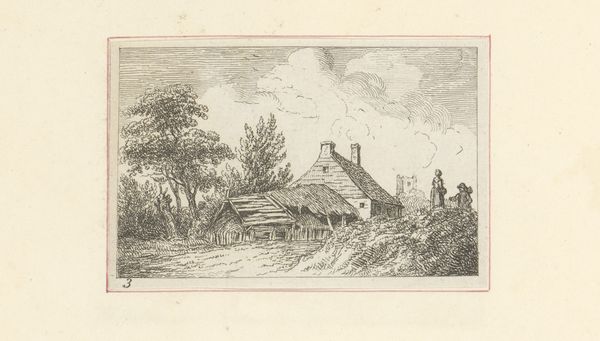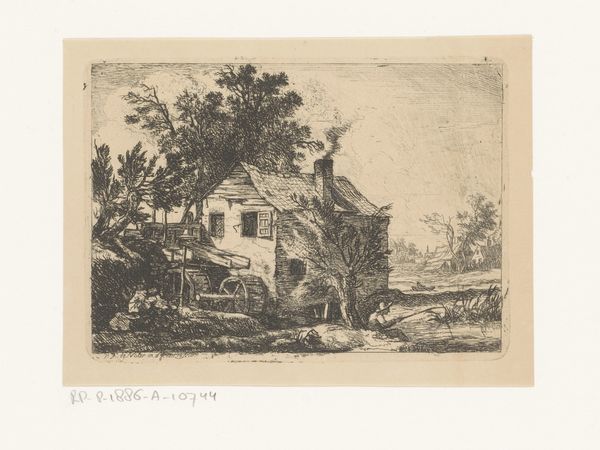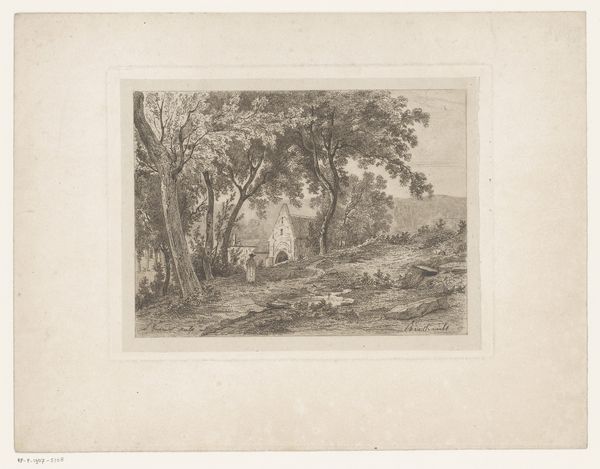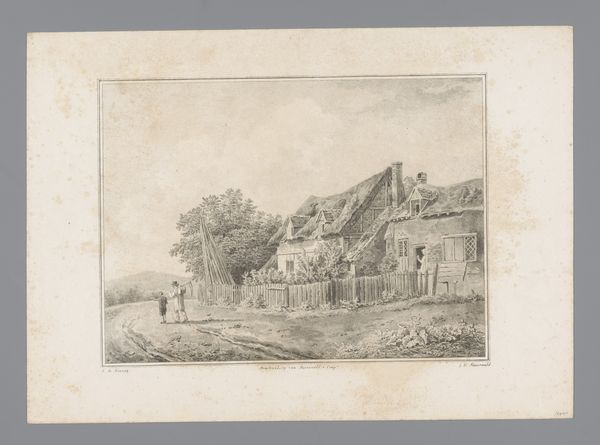
print, etching, engraving
# print
#
etching
#
landscape
#
etching
#
line
#
engraving
#
realism
Dimensions: 80 mm (height) x 100 mm (width) (plademaal)
Curator: Before us is "Landskaber" by Johan Büllow, dating from between 1751 and 1828. It’s currently held at the SMK, the National Gallery of Denmark. The piece employs etching and engraving techniques. Editor: My first impression is one of pastoral tranquility. The scale is small, intimate even. It feels like a quiet moment captured. Curator: The engraving allows us to see how these scenes would have been replicated on a large scale and how a new type of viewing art could be disseminated amongst the masses, away from only the elite who could afford to comission grander more imposing paintings. Editor: I agree; the accessibility offered by printmaking allowed for broader consumption of landscape art and its ideals, but what were these landscapes actually communicating to a population often disenfranchised from land ownership itself? Was this an idealized and ultimately false representation of the relationship to nature? Curator: That is a sharp insight. The repetitive work involved in printmaking also speaks to the socio-economic realities of artistic production. Artisans and their labor created these images that were often bought and distributed by others who may have profited more handsomely. The final prints hide away some of the difficult production aspects required in their crafting. Editor: It also brings up the function of the landscape genre in constructing national identity. Does Büllow's image reinforce a sense of belonging for those who had limited access to these spaces? Or does it highlight the disparities and the controlled management of land in Danish society at the time? We should consider Büllow's life within the larger context of socio-economic transformation. What was his position as a bourgeois individual, and how did this shape his perspective? Curator: It forces me to also consider the etchers, the engravers, the printers; how their technical skillset made images like these a regular component of visual culture and available on such a grand scale to be acquired for consumption. It’s a reminder that these scenes had makers in workshops somewhere that made a product sold on to be appreciated. Editor: Seeing the marks, acknowledging them, changes how we respond to the print's surface—recognizing those labour practices of the artisan classes makes visible, also, what has often been occluded by Art History. Curator: Looking closer, focusing on that watermill as a piece of crafted engineering rather than something simply natural—it highlights how we often omit such features in representations of landscapes; as they often feature a blend of manufacturing alongside what nature had provided already. Editor: It's a delicate scene when you look carefully; the idyllic nature masks potential complexities concerning labor, ownership, and cultural identity during the period when Johan Bulow produced these works.
Comments
No comments
Be the first to comment and join the conversation on the ultimate creative platform.
